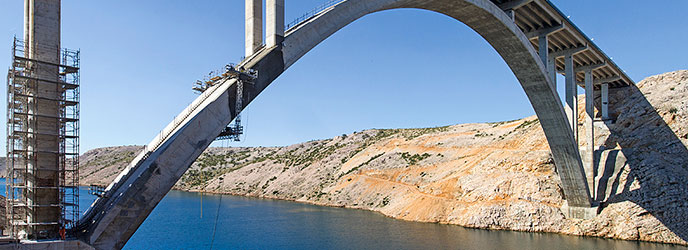
The Southern African region is experiencing a significant growth in new civil infrastructure such as roads, bridges, ports, dams and water reservoirs, power stations, power distribution facilities, etc. This is in addition to the large stock of ageing infrastructure built in previous decades.
The management and maintenance of this infrastructure poses a significant challenge both in the short-term and long-term. Some of the existing infrastructure is approaching the end of its design service life and requires measures for service-life extension in order to remain functional. Other infrastructure, such as roads and bridges may experience loads that by far exceed the original design load (due to increased traffic volumes, heavier vehicles, etc.) and require upgrading to remain functional and safe. These problems are exacerbated by the fact that a large part of our civil infrastructure is experiencing premature deterioration and degradation, which results in the need for repair and strengthening measures prior to the end of the design service life.
Strategic and effective management and maintenance programmes are therefore needed to ensure that the stock of infrastructure satisfactorily performs its function during its design life. In addition, appropriate strategies are required for the re-use of structures and materials once their service life has expired.
Failure to maintain infrastructure in a state of adequate serviceability has negative economic and social consequences. To this end the South African Government has put in place infrastructure management and maintenance strategies. However, despite these efforts, a substantial part of South African civil infrastructure remains in poor condition.
The key aspects of structural performance of civil infrastructure include the following:
- Structural condition and load-bearing capacity
- Durability and resistance against deterioration
- Serviceability and functional capacities
- Structural integrity in relation to potential failures
- Overall costs of maintenance during the lifespan
The condition and operational capacities of civil infrastructure and its various structural elements at any given point in the service life depend on multiple and interrelated factors, including:
- Original design parameters and specifications
- Initial quality of materials and construction procedures
- Environmental exposure conditions
- Corrosion and other deterioration processes
- Nature and timing of preventative maintenance and structural interventions
A sound understanding of the impact of these factors on structural performance and durability is essential in order to propose appropriate maintenance strategies, as well as timeous and effective interventions.
